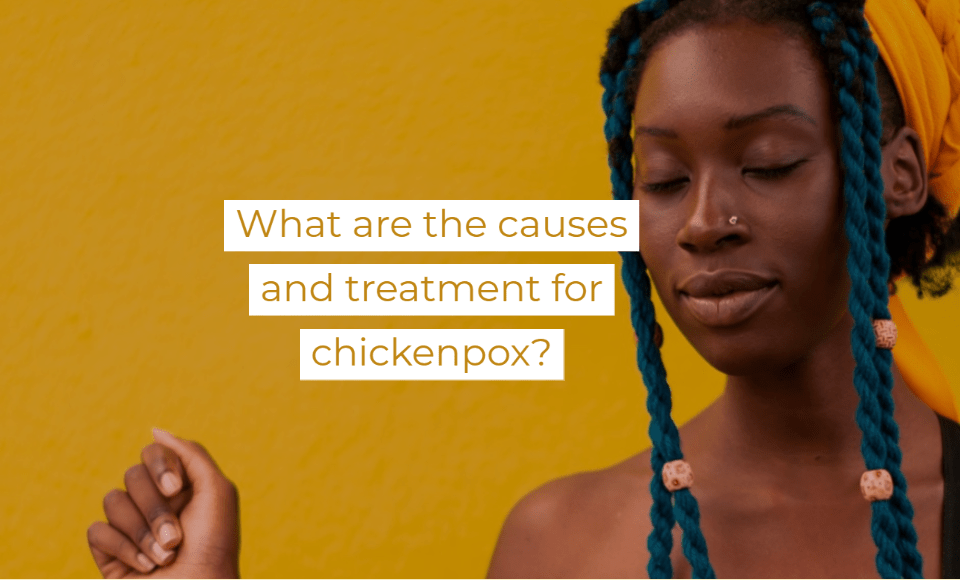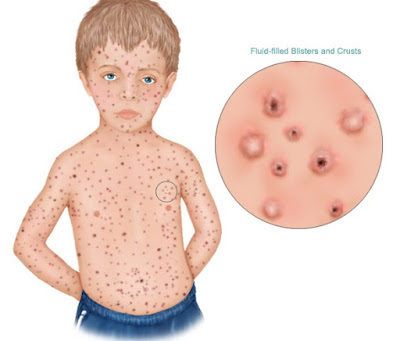Chickenpox is a highly contagious infection, brought by the varicella-zoster virus or VZV, which is a part of the family of herpesviruses. These viruses target the tissues during initial infection and lay dormant in the body. However, they can be triggered at some point due to many factors. Such reactivation of the disease is called shingles, which usually happens under a weakened immune system.
Chickenpox mostly affects kids, though it can hit adults, too. A classic sign of chickenpox is a skin rash that turns into extremely-itchy and fluid-filled red blisters. After a few days, the blisters will start to pop and leak, turn into scabs, and heal. The rash commonly begins at the face, chest, and back, before spreading throughout the body. Some cases can be severe and affect the insides of the mount, nose, eyes, and the genitals.
Symptoms of chickenpox usually appear within 10-21 days after you get in contact with a person who has the virus or touching an area where particles landed. Normal recovery lasts for about two weeks. It hits typically during the winter and spring.
Children who are under the age of 2 are most at risk of the infection, as their immune systems are yet to develop fully. They are the most at risk, though, older children and adults can get chickenpox, too. Most people have already contracted the infection by the age of 15.
You’re more vulnerable if you haven’t received the required vaccination, haven’t had the virus before, live with children, or work in a child-care facility or school.
Chickenpox is very easy to transmit, and any person can get the virus by touching or breathing particles breaking off of the chickenpox blisters. It is most contagious 1-2 days prior to the rash appearing and up until they have dried out and crusted.
The best to technically cure chickenpox is never to get it at all. The spread of the virus is prevented by getting the varicella vaccine. Experts suggest getting two doses: first at 12 to 15 months of age, and the other one at age 4 to 6. However, those who never got the vaccine aged 13 and up must receive two of the varicella vaccine 28 days apart at a minimum.
However, not all people can take the vaccine right away. Those who are seriously ill must wait until the ailment clears before receiving the shot. Such people who must not get the vaccine include pregnant women, someone being treated for cancer, any person allergic to neomycin, those who are receiving steroids, and someone who had a blood transfusion within the past five months.
If ever chickenpox hits, there isn’t any required medical treatment, especially for healthier children. But, doctors may recommend antihistamines to relieve the extreme itchiness coming from the blisters.
Should the individual be more at risks, like those with underlying conditions, or weakened immune system, doctors may prescribe antiviral medications such as acyclovir, valacyclovir, and famciclovir.
Chickenpox should never be treated using aspirin, and the medication has been associated with a condition called Reye’s syndrome. It can cause severe organ damage in the brain and liver and can be fatal. Instead, ibuprofen and acetaminophen are prescribed to ease fever linked to chickenpox.
These are also some home remedies that may help relieve the effects of chickenpox, such as getting enough rests, taking cold baths, refraining from scratching the blisters to prevent scarring, and applying calamine lotion.
Diet should be observed to avoid foods that can aggravate the symptoms, such as spicy, acidic, and salty, and hard and crunchy foods. Instead, consume soft, cool, and non-acidic fruits and vegetables to improve the symptoms.
More Readings:
Chickenpox (Wikipedia)
Related Posts:
- What are the causes and treatment for dark circles under eyes?
- What are the causes and treatments of pimples or acne?
- What is the treatment for rabies or hydrophobia?
- Who invented anti-rabies vaccine?
- What are scientists doing to combat drug-resistant bacteria and superbugs?
- How exactly does cancer physically kill a person?

